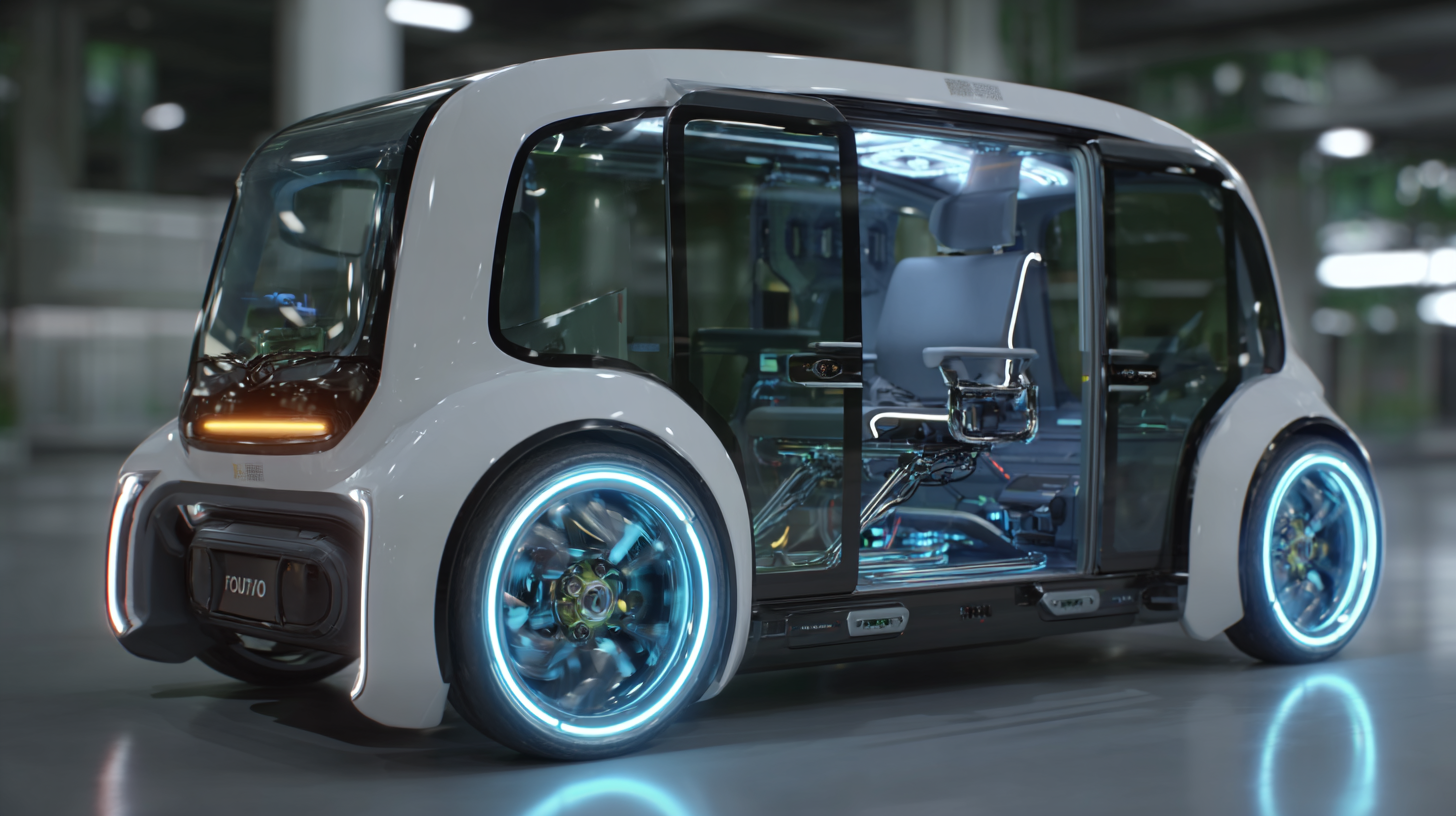Innovations Shaping the Future of Accessible Vehicles by 2025
The evolution of wheelchair accessible vehicles is rapidly transforming the landscape of mobility and independence for individuals with disabilities. As we approach 2025, innovations in design, technology, and engineering are set to enhance these vehicles, making them not only more functional but also affordable.
One of the critical factors influencing this transformation is the improvement of after-sales services and the reduction of maintenance costs, which are essential for users who rely heavily on such vehicles for daily transportation. This blog will explore the advantages of these developments, providing insights on how to choose the right vehicle for accessibility needs while keeping maintenance practical and budget-friendly.
Join us as we delve into the future of wheelchair accessible vehicles and the innovations that promise to make life easier and more accessible for all.
Enhancing Mobility: The Rise of Driverless Accessible Vehicles
The rise of driverless and accessible vehicles is poised to transform urban mobility by 2025, embodying the convergence of automation, connectivity, and sustainability. Recent reports indicate that the demand for autonomous vehicles is growing, with predictions suggesting that these innovations will revolutionize how we navigate our cities.
For instance, a study from a leading automotive research institute predicts that the adoption of fully autonomous vehicles could reduce urban traffic congestion by as much as 30%, fostering smarter, more interactive communities.
Despite these advancements, public acceptance remains a hurdle. A recent survey highlighted that around 50% of passengers are hesitant to use autonomous vehicles due to safety concerns and trust issues. This data underscores the need for continued investment in safety technologies and consumer education. Companies are focusing on not only enhancing the technological capabilities of driverless vehicles but also ensuring that these vehicles meet the accessibility needs of all individuals, including those with disabilities.
The integration of such vehicles into public transportation systems will be crucial in creating an inclusive and efficient transportation landscape as we approach 2025.
Smart Technologies: Integrating AI for Personalized User Experience
As we move towards 2025, the integration of smart technologies in accessible vehicles is set to revolutionize the user experience for individuals with disabilities. According to a report by MarketsandMarkets, the global smart mobility market is projected to reach $4 trillion by 2025, driven largely by advancements in artificial intelligence and machine learning. These technologies enable vehicles to adapt to the specific needs of their users, offering features like personalized navigation, voice-activated controls, and automated assistance, making it easier for users to interact with their environment and enhancing overall independence.
The inclusion of AI can also lead to significant advancements in safety and comfort. A study by the National University of Singapore highlighted that AI-driven systems can predict user preferences and needs in real-time, optimizing routes and customizing in-vehicle experiences such as climate control and media selection. For instance, AI can learn the travel habits and preferences of users over time, making each journey more enjoyable and efficient. As the industry embraces these innovations, accessible vehicles will not only empower users but also set a new standard for inclusivity in transportation.
Innovations in Accessible Vehicles by 2025: AI Integration Impact on User Experience
Redesigning Vehicle Interiors: Creating Adaptive Spaces for All
As we approach 2025, the redesign of vehicle interiors emphasizes creating adaptive spaces that cater to a diverse range of needs. Innovations in vehicle design are not only focusing on aesthetics but are shifting towards enhancing accessibility for all passengers. This transformation includes thoughtful integration of technology and space utilization to ensure comfort and usability, particularly for those with mobility challenges. For example, the introduction of advanced connectivity features, intuitive layouts, and flexible seating arrangements allows for a more inclusive driving experience.

Recent trends also showcase a commitment to increasing interior space across various models. The significant redesigns across sedans and SUVs highlight a collective effort to optimize cargo capacity while emphasizing the importance of passenger comfort. Features such as hands-free parking and advanced infotainment systems are becoming standard, creating a welcoming environment that prioritizes user experience. As manufacturers continue to innovate, the goal remains clear: to make vehicles not only functional but also accessible to everyone, fostering a future where adaptive spaces are the norm in automotive design.
Sustainable Innovations: Eco-Friendly Solutions for Accessible Transport
The future of accessible vehicles is rapidly evolving, particularly with a focus on sustainability. By 2025, innovations aimed at creating eco-friendly solutions for accessible transport are set to transform the landscape for individuals with mobility challenges. According to a report from the World Health Organization, over one billion people worldwide experience some form of disability, highlighting the urgent need for vehicles that cater to their requirements while minimizing environmental impact. Electric vehicles (EVs) and hybrid models are at the forefront of this change, providing cleaner alternatives that contribute to reduced carbon emissions.
Tips for promoting sustainable innovations in accessible transport include considering lightweight materials, which can enhance vehicle efficiency. Research indicates that reducing a vehicle's weight by just 10% can improve its fuel efficiency by around 6-7%. Furthermore, integrating renewable energy sources, such as solar panels, can power accessibility features like ramps and lifts without depleting battery resources.
Additionally, smart technology plays a crucial role in creating eco-friendly accessible vehicles. Data from the International Telecommunications Union indicates that 5G connectivity can enable real-time monitoring of vehicle performance, ensuring optimal energy use and emissions reduction. By leveraging these advancements, manufacturers can not only enhance accessibility but also ensure their vehicles contribute to a sustainable future for transportation.
Legislation and Standards: Shaping the Future of Accessible Vehicle Design
As we look toward 2025, the future of accessible vehicle design is increasingly influenced by new legislation and evolving industry standards. Recent reports indicate that nearly 15% of the global population lives with some form of disability, emphasizing the critical need for vehicles that cater to diverse mobility requirements. Legislation such as the Americans with Disabilities Act (ADA) and the European Accessibility Act (EAA) is pressuring manufacturers to adopt inclusive design principles, ensuring that all individuals can travel safely and comfortably.
To stay ahead of the curve, automakers are encouraged to embrace adaptive technologies and design flexibility. According to the International Organization for Standardization (ISO), integrating accessibility features can increase market reach by up to 10%, demonstrating that inclusive designs not only fulfill legal obligations but also drive profits. For example, implementing modular seating systems and user-friendly control interfaces can significantly enhance the usability of vehicles for individuals with varying disabilities.
**Tips for Manufacturers:**
1. Collaborate with advocacy groups to gain insights into the specific needs of disabled users, ensuring that design choices are informed and authentic.
2. Invest in training for design teams on accessibility standards and inclusive practices, promoting a culture of awareness that translates into innovative vehicle solutions.
